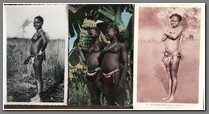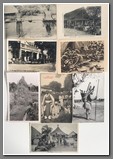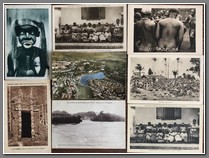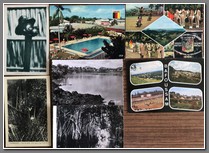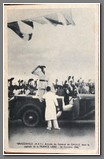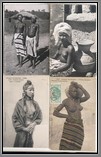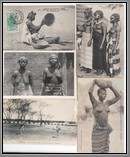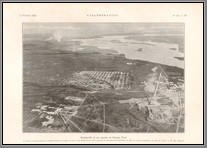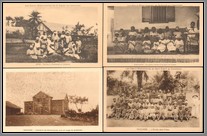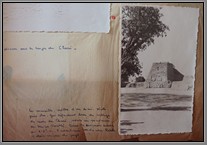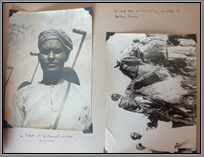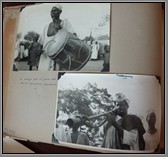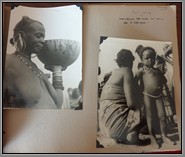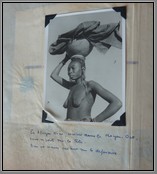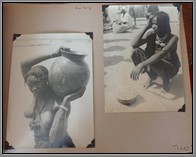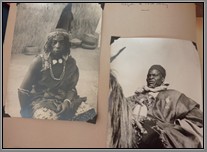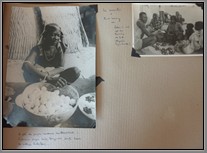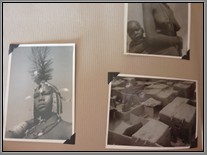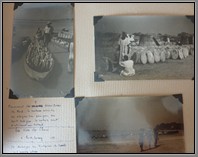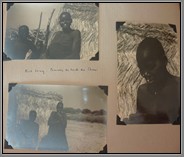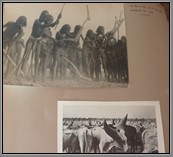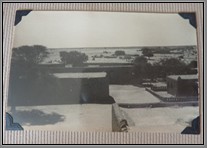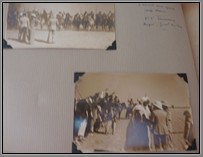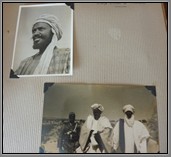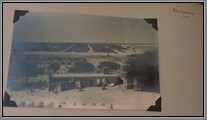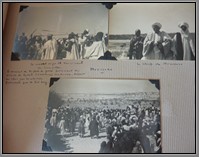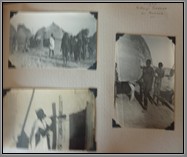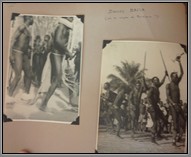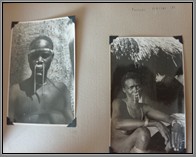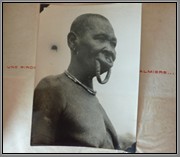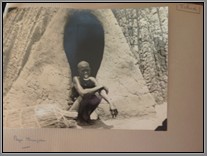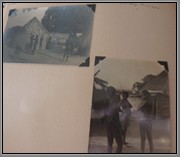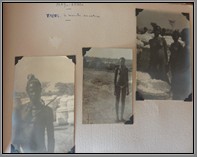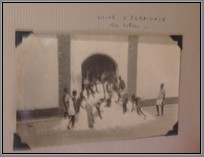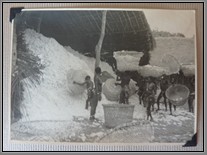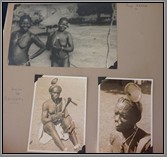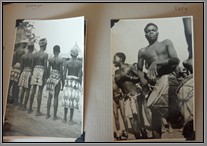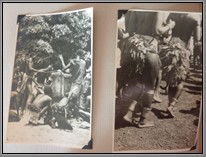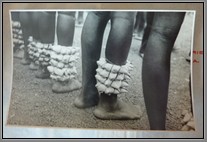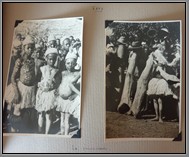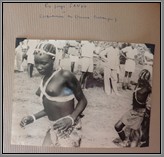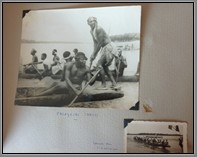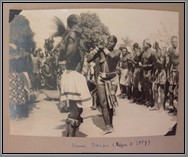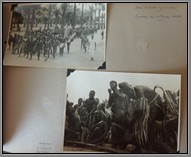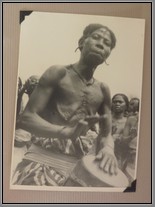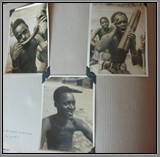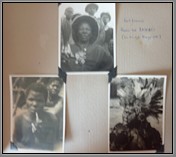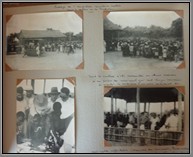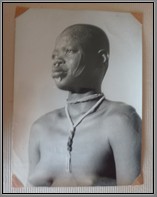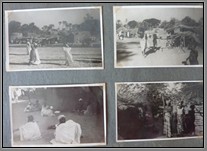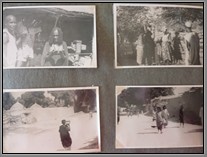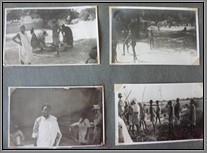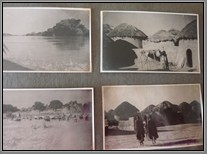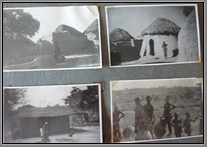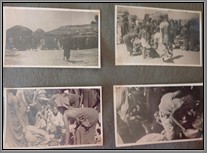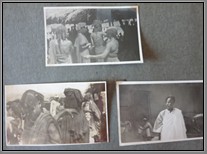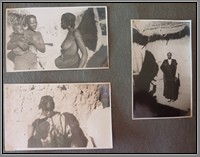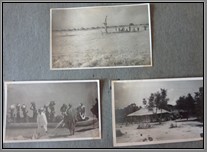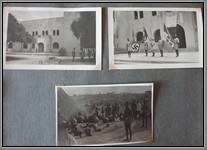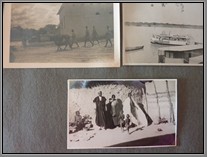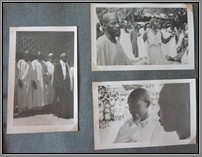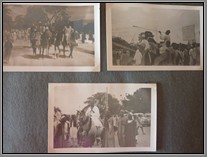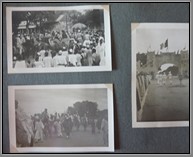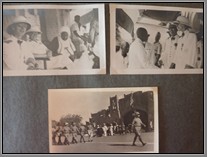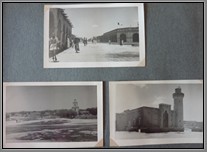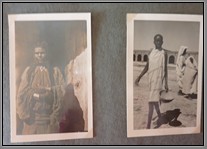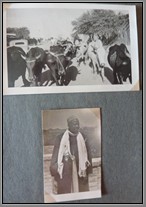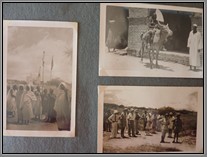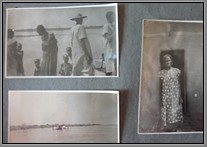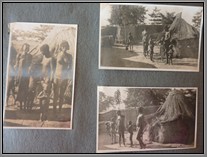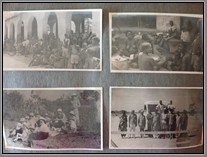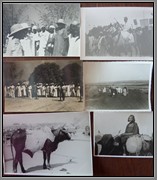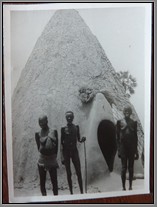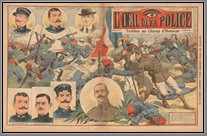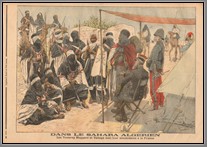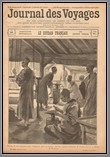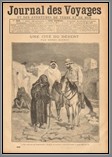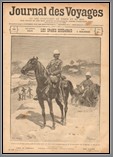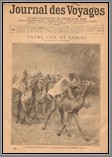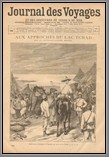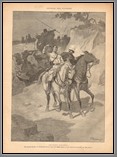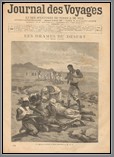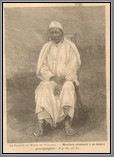French Equatorial Africa
 FA 133Photo and manuscript archive of Andre Davy, the adjutant of French Equatorial Africa Governor General Jean Louis Marie André Soucadaux. It shows his tour of AEF in 1948. There are 3 photo albums, many loose photos and a 60 page draft 3 chapter typed manuscript diary by Davy of the journey, mainly about Chad, which is the most covered region in the archive. There are 372 original photos, almost all of which are well captioned on reverse or on the album page. Shows Chad (mainly), Oubangi-Chari, Gabon and Moyen Congo. Check out the circumcision party and strange musical instruments, showing the nazi flag at Brazzaville, etc. The manuscript is original and in draft form. M
FA 133Photo and manuscript archive of Andre Davy, the adjutant of French Equatorial Africa Governor General Jean Louis Marie André Soucadaux. It shows his tour of AEF in 1948. There are 3 photo albums, many loose photos and a 60 page draft 3 chapter typed manuscript diary by Davy of the journey, mainly about Chad, which is the most covered region in the archive. There are 372 original photos, almost all of which are well captioned on reverse or on the album page. Shows Chad (mainly), Oubangi-Chari, Gabon and Moyen Congo. Check out the circumcision party and strange musical instruments, showing the nazi flag at Brazzaville, etc. The manuscript is original and in draft form. M
Price: $4500.00
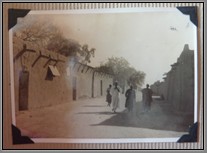 FA 133 FA 133 | 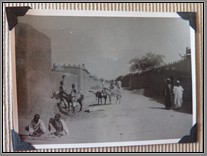 FA 133 FA 133 | 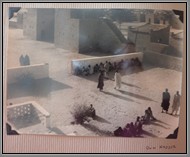 FA 133 FA 133 |
A collection of 19 late 19th century French illustrations of the colonial wars in Mali and Niger and Southern Algeria against the Tuaregs. B
Price: $990.00
Note: The Tuareg are descendants of ancient Saharan peoples described by Herodotus, who mentions the ancient Libyan people, the Garamantes. Archaeological testimony are the ruins of Germa. The modern Tuareg descended from the Garamantes. Later, they expanded southward, into the Sahel. For over two millennia,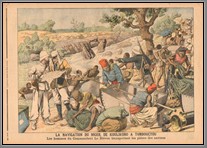 FA 126
FA 126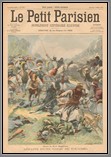 FA 126 the Tuareg operated the trans-Saharan caravan trade connecting the great cities on the southern edge of the Sahara via five desert trade routes to the northern coast of Africa.
FA 126 the Tuareg operated the trans-Saharan caravan trade connecting the great cities on the southern edge of the Sahara via five desert trade routes to the northern coast of Africa.
The Tuareg adopted camel nomadism, along with its distinctive form of social organization, from camel-herding Arabs about two thousand years ago, when the camel was introduced to the Sahara from Saudi Arabia. Like numerous African and other groups in pre-modern times, the Tuareg once took captives, either for trade or for domestic purposes; those who were not sold became assimilated into the Tuareg community. Captive servants and herdsmen formed a component of the division of labor in camel nomadism. Among the Tuareg, the work of pastoralism was specialized according to social class: warrior-aristocrats who organized group defense, livestock raids, 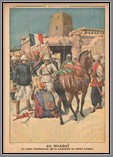 FA 126
FA 126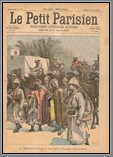 FA 126and the long-distance caravan trade; vassal-herdsmen who pastured and tended most of the confederation's livestock; and blacksmith-clients who fabricated and repaired the saddles, tools, household equipment and other material needs of the community. After the adoption of Islam, a separate class of religious clerics also became integral to Tuareg social structure.
FA 126and the long-distance caravan trade; vassal-herdsmen who pastured and tended most of the confederation's livestock; and blacksmith-clients who fabricated and repaired the saddles, tools, household equipment and other material needs of the community. After the adoption of Islam, a separate class of religious clerics also became integral to Tuareg social structure.
In the early nineteenth century, the Tuareg resisted the French invasion of their Central Saharan homelands for the purpose of colonization. Tuareg broadswords were no match for the cannons and automatic rifles of French squadrons, and after numerous massacres, the Tuareg were subdued and required to sign treaties in Mali 1905 and Niger 1917. In southern Algeria, the French met some of the strongest resistance from the Ahaggar Tuareg. 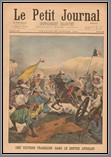 FA 126Their Amenokal, traditional chief Moussa ag Amastan, fought numerous battles in defense of the region. Finally, Tuareg territories were taken under French governance and their confederations were largely dismantled and re-organized. Before French colonization, the Tuareg were organized into loose confederations, each consisting of a dozen or so tribes. Each of the main groups had a traditional leader called Amenokal, along with an assembly of tribal chiefs: Imgharan, singular Amghar. The groups were: Kel Ahaggar, Kel Ajjer, Kel, Adrar N'Fughas, Iwellemidan, and Kel Gres. Following the independence of African countries in 1960s, Tuareg territory was artificially divided into modern nations: Niger, Mali, Algeria, Libya, and Burkina Faso.
FA 126Their Amenokal, traditional chief Moussa ag Amastan, fought numerous battles in defense of the region. Finally, Tuareg territories were taken under French governance and their confederations were largely dismantled and re-organized. Before French colonization, the Tuareg were organized into loose confederations, each consisting of a dozen or so tribes. Each of the main groups had a traditional leader called Amenokal, along with an assembly of tribal chiefs: Imgharan, singular Amghar. The groups were: Kel Ahaggar, Kel Ajjer, Kel, Adrar N'Fughas, Iwellemidan, and Kel Gres. Following the independence of African countries in 1960s, Tuareg territory was artificially divided into modern nations: Niger, Mali, Algeria, Libya, and Burkina Faso.
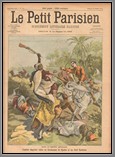 FA 126 FA 126 | 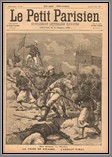 FA 126 FA 126 | 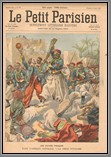 FA 126 FA 126 | 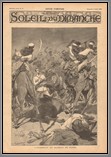 FA 126 FA 126 |
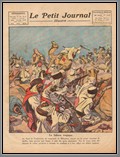 FA 126 FA 126 | 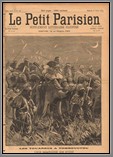 FA 126 FA 126 | 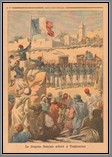 FA 126 FA 126 | 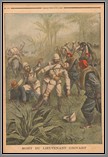 FA 126 FA 126 |
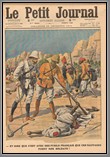 FA 126 FA 126 | 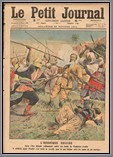 FA 126 FA 126 | 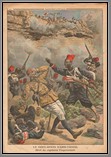 FA 126 FA 126 | 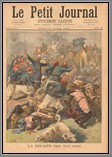 FA 126 FA 126 |

